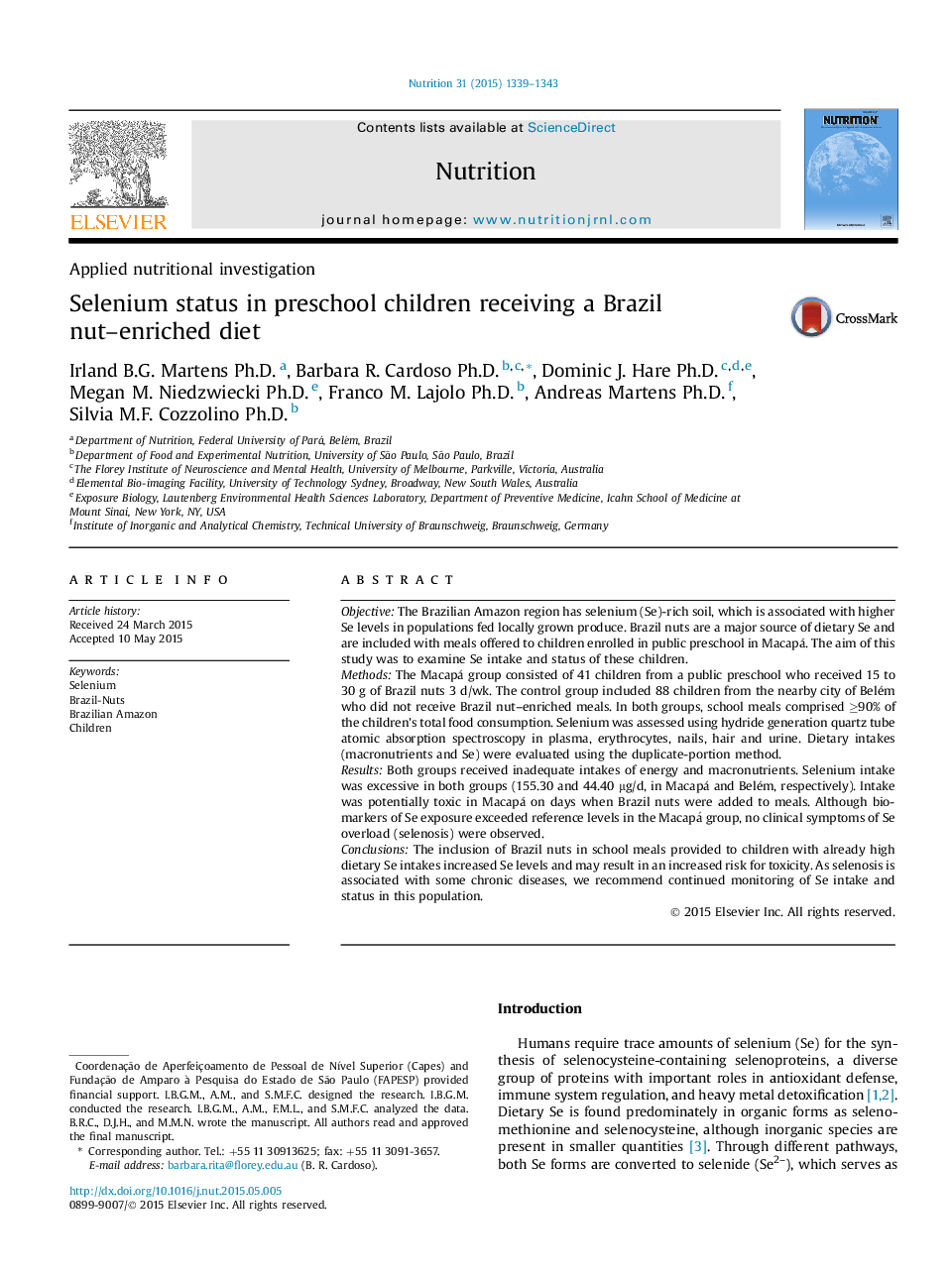| کد مقاله | کد نشریه | سال انتشار | مقاله انگلیسی | نسخه تمام متن |
|---|---|---|---|---|
| 3276269 | 1589667 | 2015 | 5 صفحه PDF | دانلود رایگان |
• Brazil nuts can be used as a dietary selenium supplement.
• Children from an Amazonian school fed a Brazil nut–enriched diet had high levels of selenium.
• These children were asymptomatic, but at risk for toxicity.
• Children not receiving a supplemented diet had normal levels of selenium.
• Selenium supplementation should be preceded by assessment of selenium levels in the recipients.
ObjectiveThe Brazilian Amazon region has selenium (Se)-rich soil, which is associated with higher Se levels in populations fed locally grown produce. Brazil nuts are a major source of dietary Se and are included with meals offered to children enrolled in public preschool in Macapá. The aim of this study was to examine Se intake and status of these children.MethodsThe Macapá group consisted of 41 children from a public preschool who received 15 to 30 g of Brazil nuts 3 d/wk. The control group included 88 children from the nearby city of Belém who did not receive Brazil nut–enriched meals. In both groups, school meals comprised ≥90% of the children's total food consumption. Selenium was assessed using hydride generation quartz tube atomic absorption spectroscopy in plasma, erythrocytes, nails, hair and urine. Dietary intakes (macronutrients and Se) were evaluated using the duplicate-portion method.ResultsBoth groups received inadequate intakes of energy and macronutrients. Selenium intake was excessive in both groups (155.30 and 44.40 μg/d, in Macapá and Belém, respectively). Intake was potentially toxic in Macapá on days when Brazil nuts were added to meals. Although biomarkers of Se exposure exceeded reference levels in the Macapá group, no clinical symptoms of Se overload (selenosis) were observed.ConclusionsThe inclusion of Brazil nuts in school meals provided to children with already high dietary Se intakes increased Se levels and may result in an increased risk for toxicity. As selenosis is associated with some chronic diseases, we recommend continued monitoring of Se intake and status in this population.
Journal: Nutrition - Volume 31, Issues 11–12, November–December 2015, Pages 1339–1343
